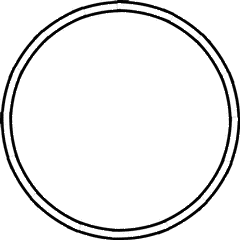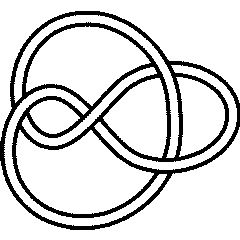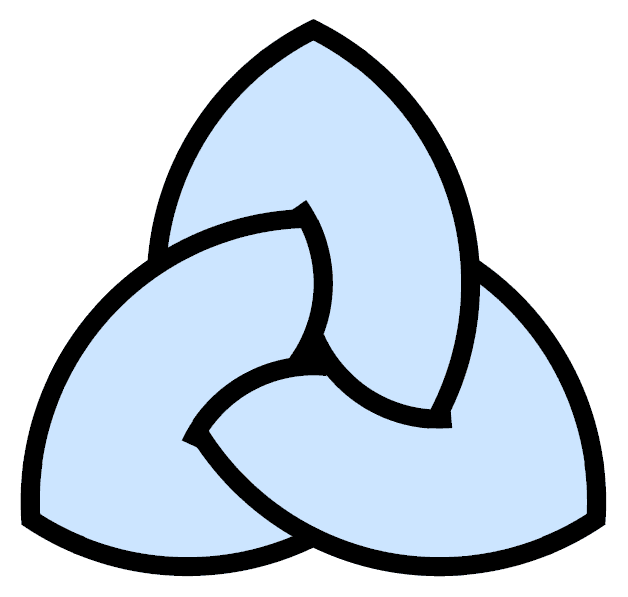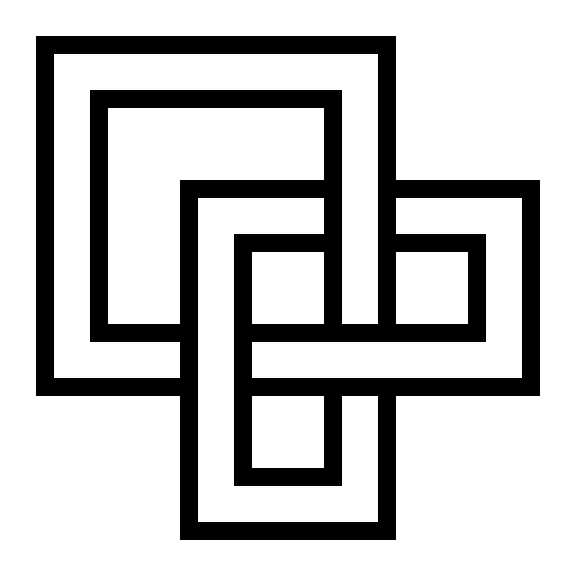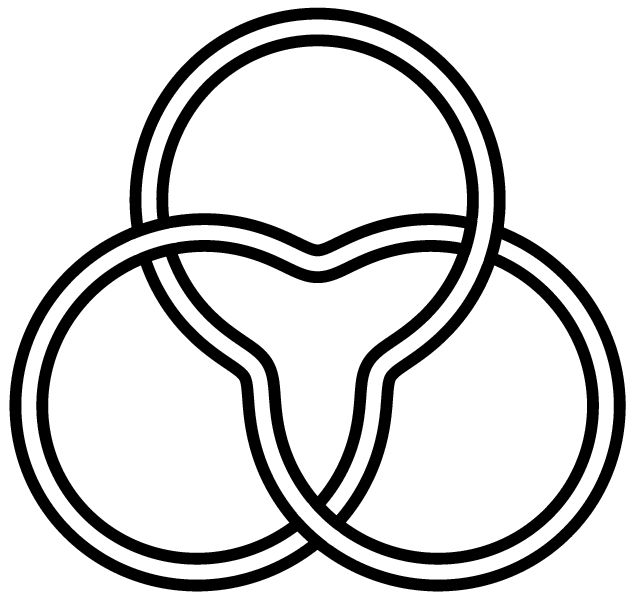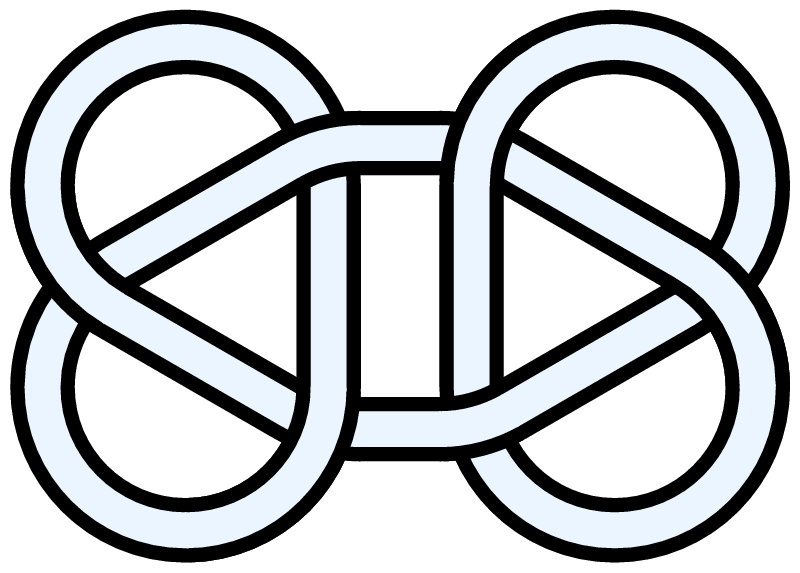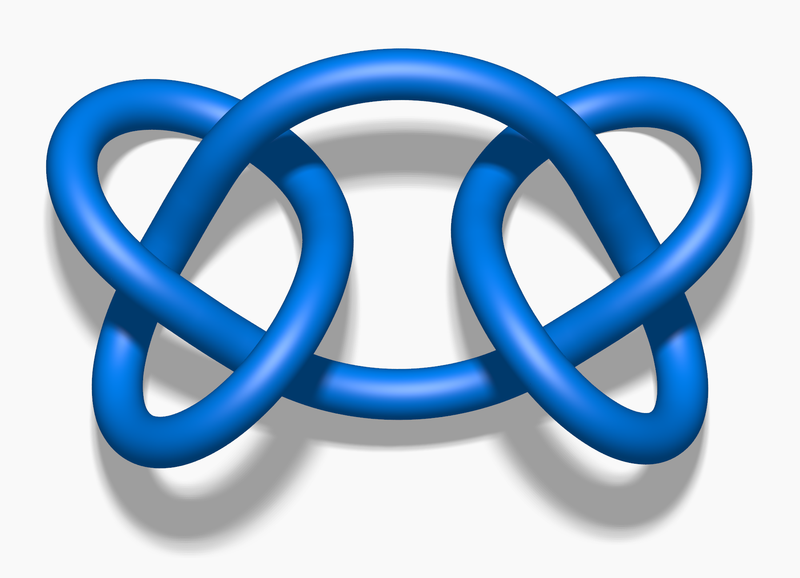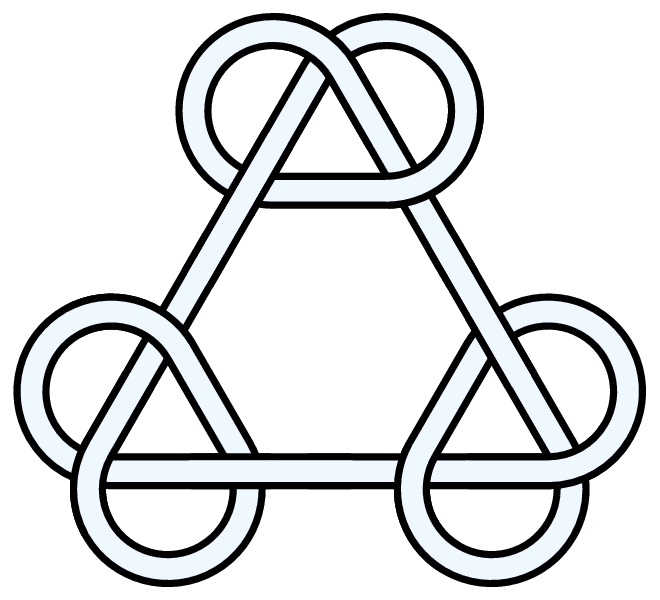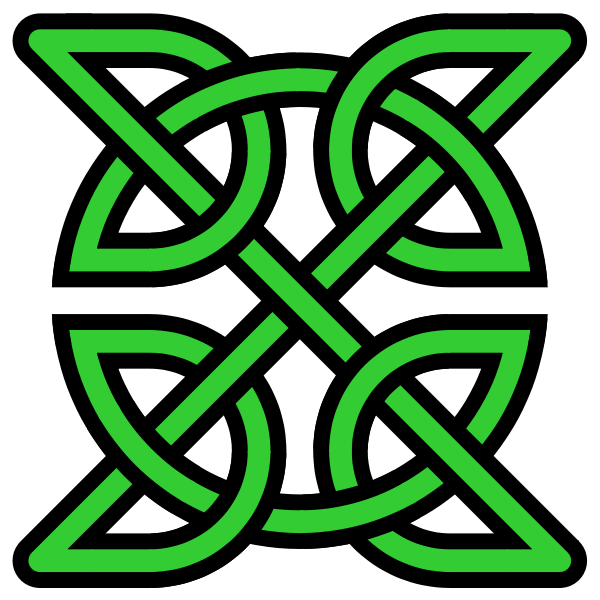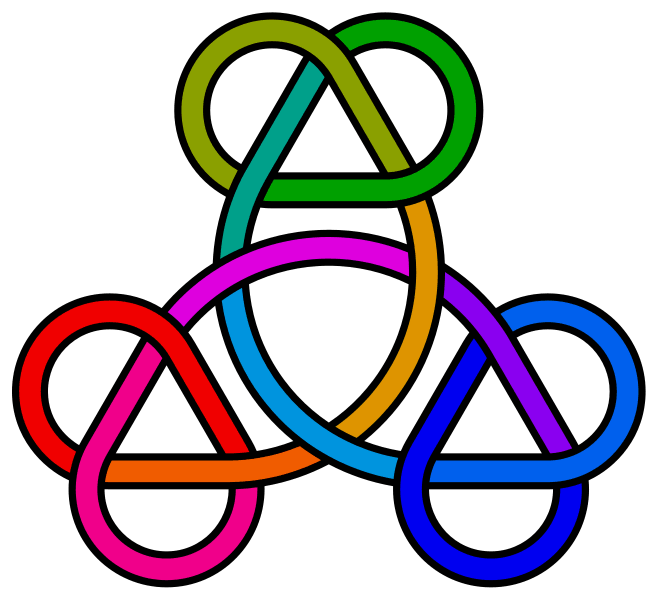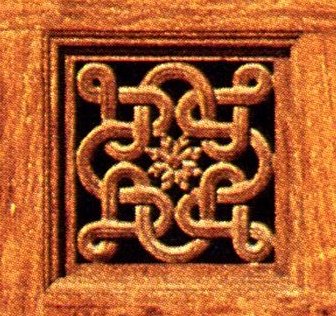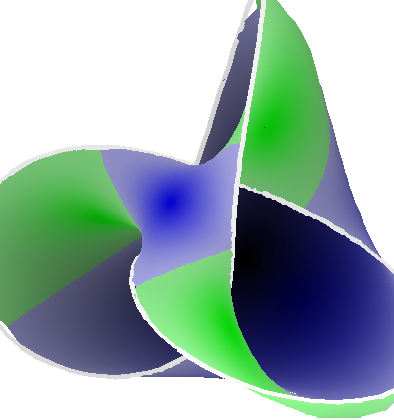The trefoil is perhaps the easiest knot to find in "nature", and is topologically equivalent to the interlaced form of the common Christian and pagan "triquetra" symbol [12]:
 Logo of Caixa Geral de Depositos, Lisboa [1] |
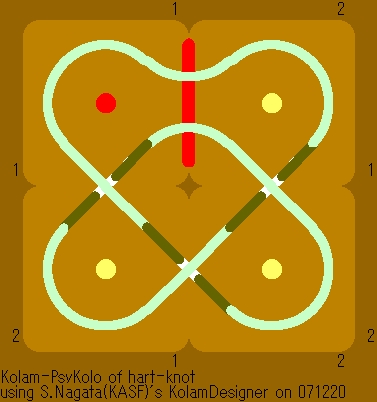 A knot consists of two harts in Kolam [2] |
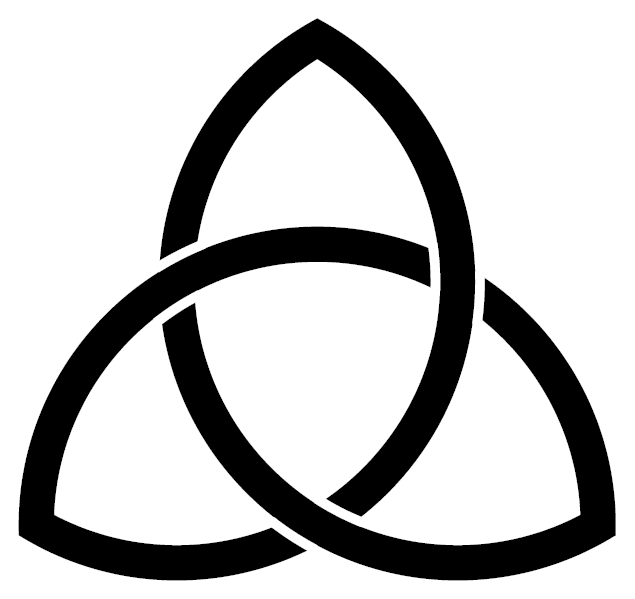 A basic form of the interlaced Triquetra; as a Christian symbol, it refers to the Trinity |
|
Further images...
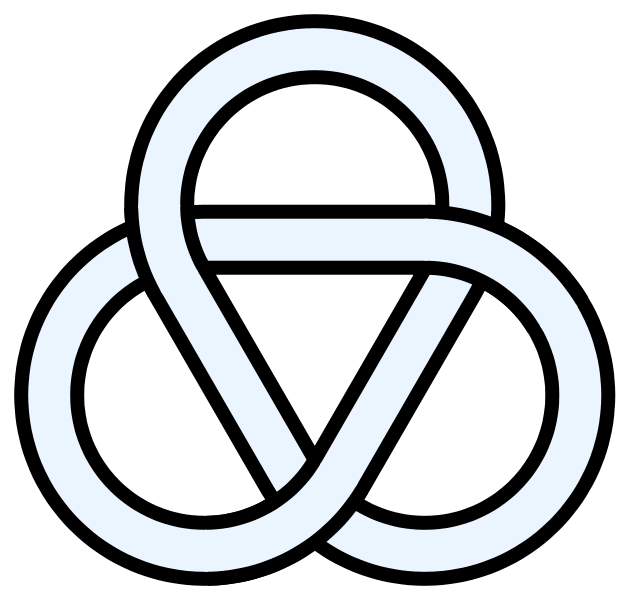 Trefoil/triquetra without outside corners (made from straight lines and 240° circular arcs) |
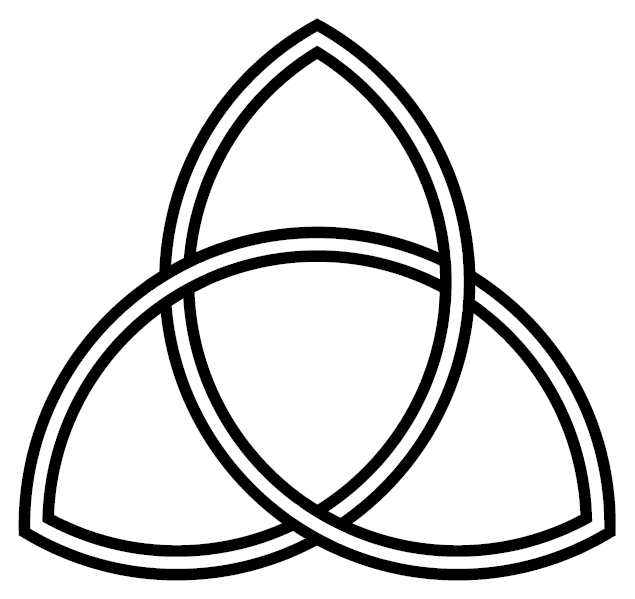 Triquetra made from circular arc ribbons |
|
|
|
|
 A trefoil near the Hollander York Gallery [4] |
 Trefoil of three intersecting circles |
 Trefoil depicted in non-threefold form |
 3D depiction in non-threefold form |
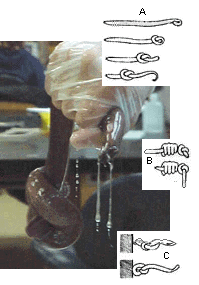 A hagfish tying itself in a knot to escape capture. [5] |
 One version of the Germanic "Valknut" symbol |
|
|
|
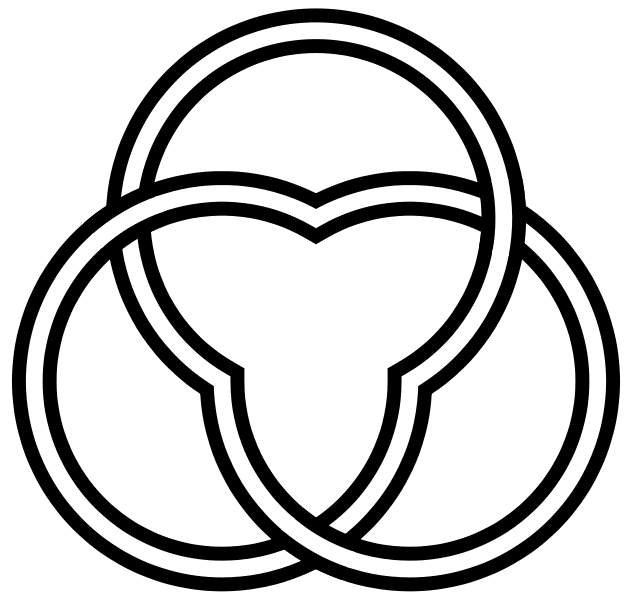 In the form of an architectural trefoil |
|
 Alternate Valknut depiction |
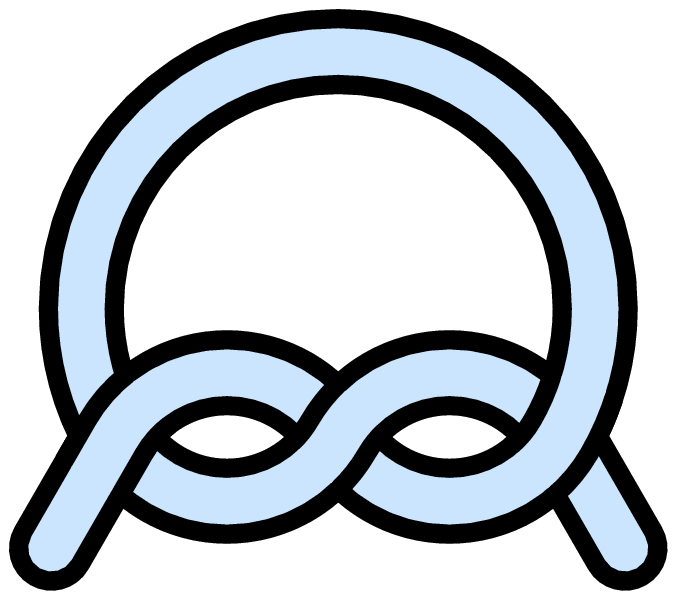 Simple overhand knot of practical knot-tying |
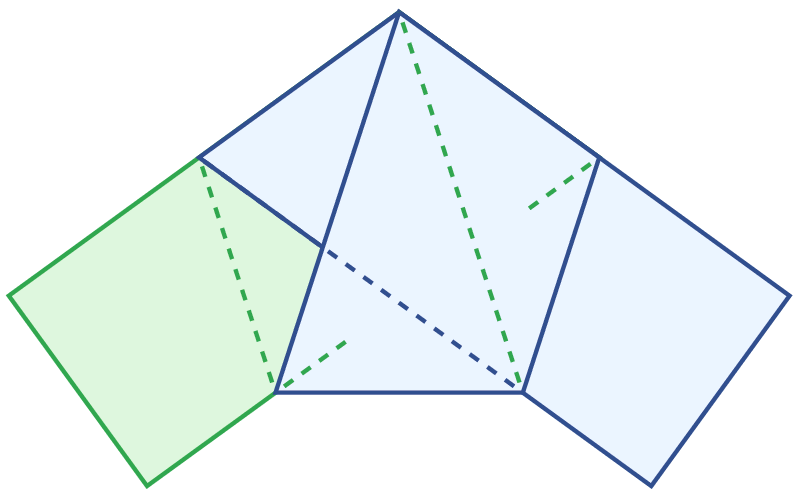 Tightly folded pentagonal overhand knot |
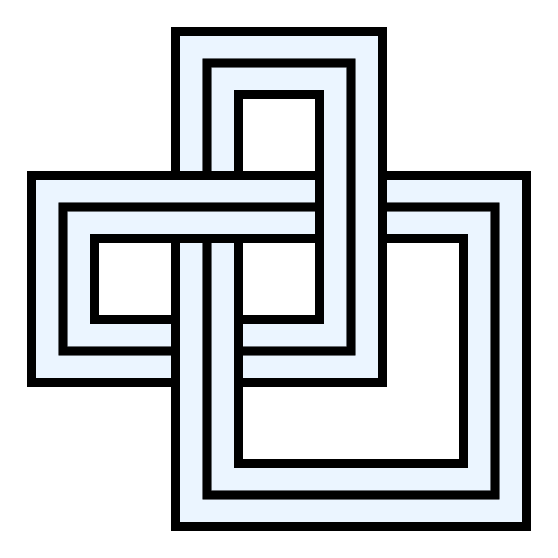 Visually fancier square trefoil |
 Trefoil knot as impossible object |
 Logo of the Caixa Geral de Depósitos with white background |
 The NeverEnding Story logo is a connected sum of two trefoils. [7] |
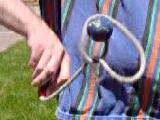 Mike Hutchings' Rope Trick [8] |
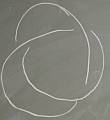 Thurston's Trefoil - Figure Eight Trick [9] |
|
|
|
Non-prime (compound) versions
Two trefoils (single-closed-loop version of the "granny knot" of practical knot-tying).
Two trefoils (single-closed-loop version of the "square knot" of practical knot-tying)
Three trefoils (symmetrical).
Four trefoils (Celtic or pseudo-Celtic decorative knot which fits in square)
Three trefoils along a closed loop which itself is knotted as a trefoil.
Sum of four trefoils, Multan, Pakistan
For configurations of two trefoils along a closed loop which are prime, see 8_15 and 10_120. For a configuration of three trefoils along a closed loop which is prime, see K13a248. For a prime link consisting of two joined trefoils, see L10a108.
Knot presentations
Four dimensional invariants
Polynomial invariants
Further Quantum Invariants
Further quantum knot invariants for 3_1.
The braid index of 3_1 is only 2, so it's easy to calculate lots of quantum invariants.
A1 Invariants.
| Weight
|
Invariant
|
| 1
|

|
| 2
|

|
| 3
|

|
| 4
|

|
| 5
|

|
| 6
|

|
| 8
|

|
A2 Invariants.
| Weight
|
Invariant
|
| 0,1
|

|
| 0,2
|

|
| 1,0
|

|
| 1,1
|

|
| 2,0
|

|
| 3,0
|

|
A3 Invariants.
| Weight
|
Invariant
|
| 0,0,1
|

|
| 0,1,0
|

|
| 1,0,0
|

|
| 1,0,1
|

|
A4 Invariants.
| Weight
|
Invariant
|
| 0,0,0,1
|

|
| 0,1,0,0
|

|
| 1,0,0,0
|

|
A5 Invariants.
| Weight
|
Invariant
|
| 0,0,0,0,1
|

|
| 1,0,0,0,0
|

|
A6 Invariants.
| Weight
|
Invariant
|
| 0,0,0,0,0,1
|

|
| 1,0,0,0,0,0
|

|
B2 Invariants.
| Weight
|
Invariant
|
| 0,1
|

|
| 1,0
|

|
B3 Invariants.
| Weight
|
Invariant
|
| 1,0,0
|

|
B4 Invariants.
| Weight
|
Invariant
|
| 1,0,0,0
|

|
B5 Invariants.
| Weight
|
Invariant
|
| 1,0,0,0,0
|

|
C3 Invariants.
| Weight
|
Invariant
|
| 1,0,0
|

|
C4 Invariants.
| Weight
|
Invariant
|
| 1,0,0,0
|

|
D4 Invariants.
| Weight
|
Invariant
|
| 0,1,0,0
|

|
| 1,0,0,0
|

|
G2 Invariants.
| Weight
|
Invariant
|
| 0,1
|

|
| 1,0
|

|
.
Computer Talk
The above data is available with the
Mathematica package
KnotTheory`, as shown in the (simulated) Mathematica session below. Your input (in
red) is realistic; all else should have the same content as in a real mathematica session, but with different formatting. This Mathematica session is also available (albeit only for the knot
5_2) as the notebook
PolynomialInvariantsSession.nb.
(The path below may be different on your system, and possibly also the KnotTheory` date)
In[1]:=
|
AppendTo[$Path, "C:/drorbn/projects/KAtlas/"];
<< KnotTheory`
|
|
|
KnotTheory::loading: Loading precomputed data in PD4Knots`.
|
Out[4]=
|

|
Out[5]=
|

|
In[6]:=
|
Alexander[K, 2][t]
|
|
|
KnotTheory::credits: The program Alexander[K, r] to compute Alexander ideals was written by Jana Archibald at the University of Toronto in the summer of 2005.
|
Out[6]=
|

|
In[7]:=
|
{KnotDet[K], KnotSignature[K]}
|
|
|
KnotTheory::loading: Loading precomputed data in Jones4Knots`.
|
Out[8]=
|

|
In[9]:=
|
HOMFLYPT[K][a, z]
|
|
|
KnotTheory::credits: The HOMFLYPT program was written by Scott Morrison.
|
Out[9]=
|

|
In[10]:=
|
Kauffman[K][a, z]
|
|
|
KnotTheory::loading: Loading precomputed data in Kauffman4Knots`.
|
Out[10]=
|

|
| V2,1 through V6,9:
|
| V2,1
|
V3,1
|
V4,1
|
V4,2
|
V4,3
|
V5,1
|
V5,2
|
V5,3
|
V5,4
|
V6,1
|
V6,2
|
V6,3
|
V6,4
|
V6,5
|
V6,6
|
V6,7
|
V6,8
|
V6,9
|

|

|

|

|

|

|

|

|

|

|

|

|

|

|

|

|

|

|
|
V2,1 through V6,9 were provided by Petr Dunin-Barkowski <barkovs@itep.ru>, Andrey Smirnov <asmirnov@itep.ru>, and Alexei Sleptsov <sleptsov@itep.ru> and uploaded on October 2010 by User:Drorbn. Note that they are normalized differently than V2 and V3.
The coefficients of the monomials  are shown, along with their alternating sums
are shown, along with their alternating sums  (fixed
(fixed  , alternation over
, alternation over  ). The squares with yellow highlighting are those on the "critical diagonals", where
). The squares with yellow highlighting are those on the "critical diagonals", where  or
or  , where
, where  -2 is the signature of 3 1. Nonzero entries off the critical diagonals (if any exist) are highlighted in red.
-2 is the signature of 3 1. Nonzero entries off the critical diagonals (if any exist) are highlighted in red.
|
-3 | -2 | -1 | 0 | χ |
| -1 | | | | 1 | 1 |
| -3 | | | | 1 | 1 |
| -5 | | 1 | | | 1 |
| -7 | | | | | 0 |
| -9 | 1 | | | | -1 |
Computer Talk
Much of the above data can be recomputed by Mathematica using the package KnotTheory`. See A Sample KnotTheory` Session.

In[1]:= |
<< KnotTheory` |
Loading KnotTheory` (version of August 17, 2005, 14:44:34)... |
In[2]:= | Crossings[Knot[3, 1]] |
Out[2]= | 3 |
In[3]:= | PD[Knot[3, 1]] |
Out[3]= | PD[X[1, 4, 2, 5], X[3, 6, 4, 1], X[5, 2, 6, 3]] |
In[4]:= | GaussCode[Knot[3, 1]] |
Out[4]= | GaussCode[-1, 3, -2, 1, -3, 2] |
In[5]:= | BR[Knot[3, 1]] |
Out[5]= | BR[2, {-1, -1, -1}] |
In[6]:= | alex = Alexander[Knot[3, 1]][t] |
Out[6]= | 1
-1 + - + t
t |
In[7]:= | Conway[Knot[3, 1]][z] |
Out[7]= | 2
1 + z |
In[8]:= | Select[AllKnots[], (alex === Alexander[#][t])&] |
Out[8]= | {Knot[3, 1]} |
In[9]:= | {KnotDet[Knot[3, 1]], KnotSignature[Knot[3, 1]]} |
Out[9]= | {3, -2} |
In[10]:= | J=Jones[Knot[3, 1]][q] |
Out[10]= | -4 -3 1
-q + q + -
q |
In[11]:= | Select[AllKnots[], (J === Jones[#][q] || (J /. q-> 1/q) === Jones[#][q])&] |
Out[11]= | {Knot[3, 1]} |
In[12]:= | A2Invariant[Knot[3, 1]][q] |
Out[12]= | -14 -12 -8 2 -4 -2
-q - q + q + -- + q + q
6
q |
In[13]:= | Kauffman[Knot[3, 1]][a, z] |
Out[13]= | 2 4 3 5 2 2 4 2
-2 a - a + a z + a z + a z + a z |
In[14]:= | {Vassiliev[2][Knot[3, 1]], Vassiliev[3][Knot[3, 1]]} |
Out[14]= | {0, -1} |
In[15]:= | Kh[Knot[3, 1]][q, t] |
Out[15]= | -3 1 1 1
q + - + ----- + -----
q 9 3 5 2
q t q t |












